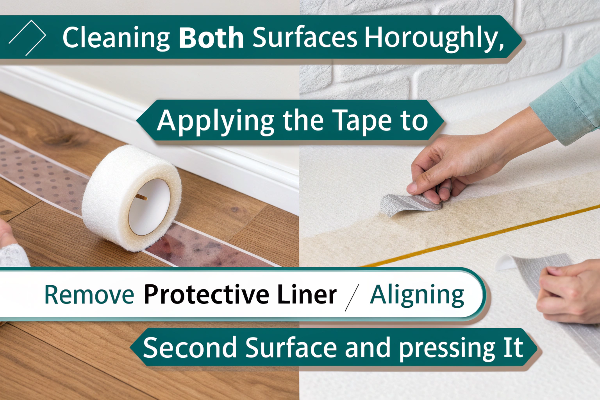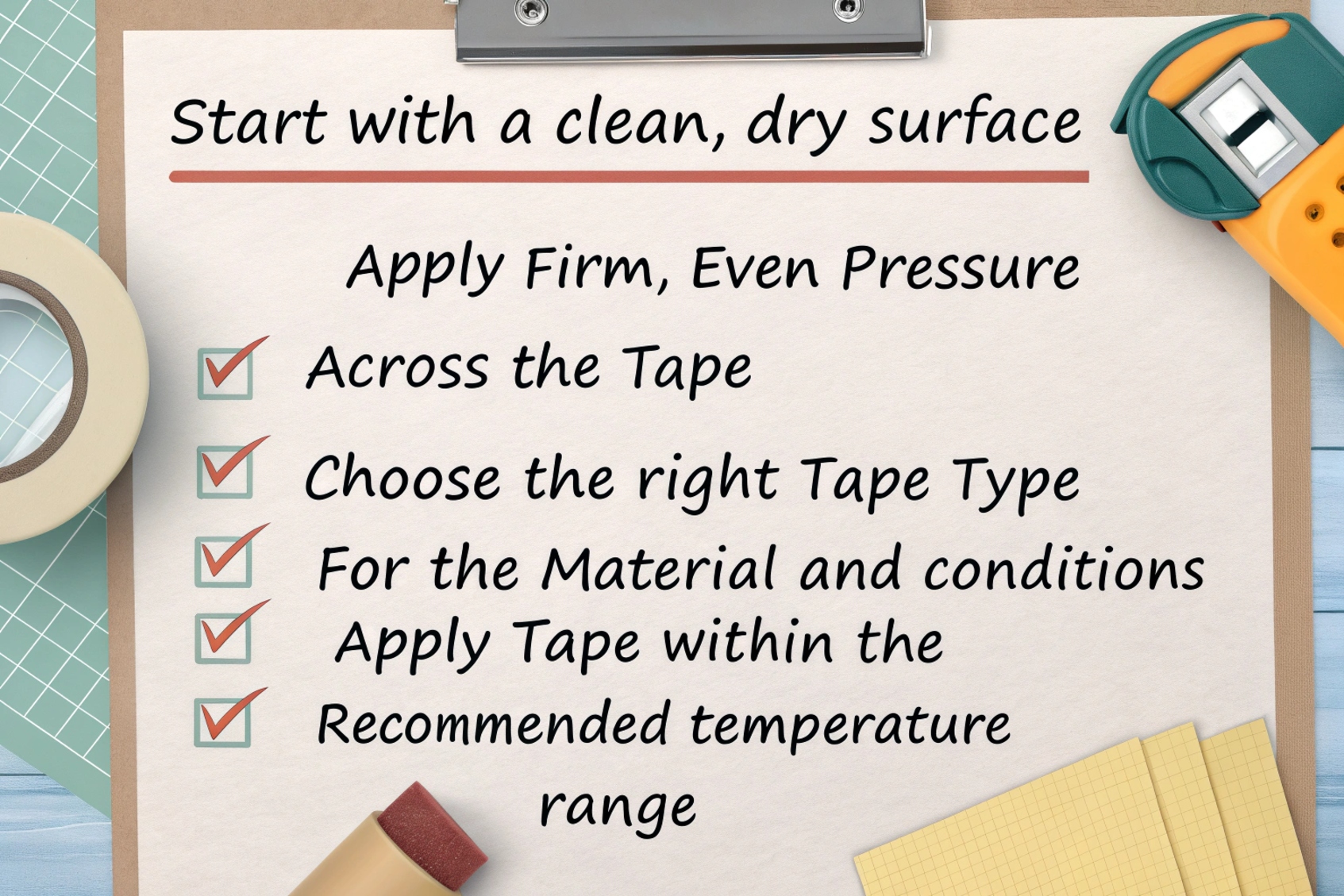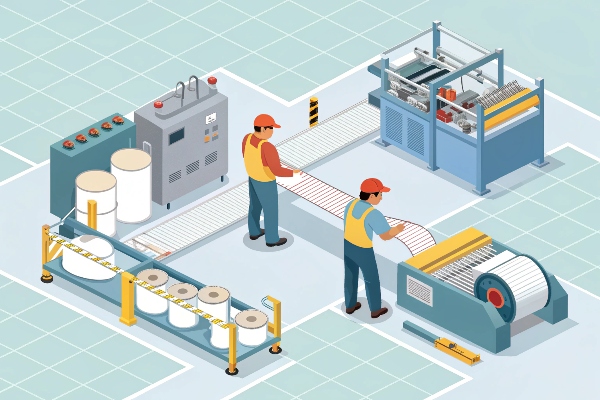How Can Tape Application Solutions Revolutionize Your Packaging Process?
Are you struggling with inconsistent tape application? This wastes time and materials, hurting your bottom line. Let’s explore better ways to apply tape effectively.
Effective tape solutions ensure consistent, secure seals every time. They boost efficiency, cut down on waste, and improve the overall look and strength of your packages. This is vital for protecting your products and representing your brand well.
Getting tape application right seems simple, but it impacts so much more than just closing a box. It affects how customers see your product and how well it survives shipping. Let’s look closer at how improving this step can make a big difference in your operations. We’ll cover where tape is used, specific solutions like 3M’s, the basic rules, and how to implement a solid system.
What Are the Key Applications of Tape in Packaging?
Wondering where tape truly makes a difference in packaging? Using it incorrectly means missing chances to improve efficiency and security. Let’s look at tape’s most important jobs.
Tape is essential for many packaging tasks. This includes sealing cartons securely, bundling items together, reinforcing weak box areas, adding tamper-evident seals, and applying protective films. These uses impact shipping safety and how products look.
!
Tape does more than just seal boxes. Its versatility makes it a key player in modern packaging. Let’s break down some primary uses:
- Carton Sealing: This is the most common use. The right tape ensures boxes stay closed during transit, preventing damage or loss. Different tapes, like pressure-sensitive or water-activated, offer various levels of strength and tamper evidence.
- Bundling: Tape can group multiple items together for easier handling or shipping. This is useful for promotions or keeping related parts together.
- Reinforcement: Adding tape along edges or corners can strengthen boxes, especially for heavy or fragile contents. It provides extra support where needed.
- Tamper-Evident Seals: Specialized tapes show clear signs if a package has been opened. This is crucial for industries like pharmaceuticals or electronics, ensuring product integrity.
- Surface Protection: Protective tapes or films shield sensitive surfaces (like screens or polished metal) from scratches or dirt during manufacturing, shipping, or installation.
Understanding these applications helps you choose the right tape and the right application method. Consistent, accurate application is key for all these uses, which often points towards needing more than just manual methods.
| Application | Key Benefit | Common Tape Type |
|---|---|---|
| Carton Sealing | Secure closure, prevents loss | Pressure-Sensitive, Water-Activated |
| Bundling | Easier handling, keeps items grouped | Filament Tape, Strapping Tape |
| Reinforcement | Increased box strength | Filament Tape, Duct Tape |
| Tamper-Evident | Security, indicates tampering | Security Tape, Void Tape |
| Surface Protection | Prevents scratches, dirt | Protective Film, Masking Tape |
What Makes the 3M Protective Tape Application Solution Stand Out?
You’ve likely heard of 3M tape, but what makes their protective solutions special? Using generic tape might seem cheaper initially, but can lead to problems. Discover what sets 3M apart.
3M protective tape solutions are valued for strong, reliable adhesion and durability. They often feature clean removal without residue and come in specialized types designed for specific surfaces and tough conditions, ensuring high-quality protection.

When we talk about protective tapes, 3M is a name that often comes up, and for good reason. They’ve built a reputation based on quality and innovation. Here’s why their solutions are often considered a benchmark:
- Adhesion Science: 3M invests heavily in adhesive technology. This means their tapes often stick better, last longer, and perform reliably under various conditions (temperature, humidity, surface type). They have formulations designed for tricky surfaces where other tapes might fail.
- Durability: Their protective films and tapes are generally tough. They resist abrasion, chemicals, and UV light better than many alternatives, providing robust protection during harsh processes or shipping.
- Clean Removal: A key feature of many 3M protective tapes is their ability to peel off cleanly without leaving sticky residue or damaging the underlying surface. This is critical for finished goods where appearance matters. I remember a client struggling with residue from a cheaper tape on high-gloss panels – switching to a quality solution saved them hours of cleanup.
- Specialization: 3M offers a wide range of products tailored for specific industries and applications, from protecting delicate electronic screens to masking off areas during painting or construction.
Using a high-quality tape like 3M’s is only half the battle. To get the full benefit, you need an equally reliable application method. Inconsistent pressure or alignment during application can undermine even the best tape’s performance.
| Feature | Benefit | Why It Matters |
|---|---|---|
| Advanced Adhesion | Reliable sticking, holds under stress | Prevents failure, ensures protection |
| Durability | Resists damage, lasts longer | Protects through tough conditions |
| Clean Removal | No residue, no surface damage | Saves cleanup time, maintains finish |
| Specialization | Tailored for specific needs | Optimal performance for the job |
What Are the Golden Rules for Perfect Tape Application?
Is your tape peeling off, tearing, or just not sticking right? Application errors are frustrating and costly. Follow these key rules for successful taping every single time.
The essential rules for good tape application are simple: start with a clean, dry surface. Apply firm, even pressure across the tape. Always choose the right tape type for the material and conditions. Apply it within the recommended temperature range.

Getting tape to stick reliably isn’t magic; it’s mostly about following some basic principles. Overlooking these can lead to weak seals, wasted tape, and potential product damage. Let’s break down the essentials:
- Surface Preparation is King: Tape needs a clean, dry surface to bond properly. Dust, dirt, grease, or moisture act as barriers, preventing good adhesion. Always wipe down surfaces before applying tape. I’ve seen perfectly good tape fail simply because the box was dusty from storage.
- Pressure Matters: Most packaging tapes are "pressure-sensitive," meaning they need firm, even pressure to activate the adhesive and create a strong bond. Just laying the tape on isn’t enough. You need to rub it down securely. Consistent pressure ensures the adhesive makes full contact with the surface.
- Choose the Right Tool for the Job: Not all tapes are created equal. Using packing tape for masking or masking tape for heavy boxes won’t work well. Consider the weight of the contents, the surface material (cardboard, plastic, metal), and environmental conditions (cold, heat, humidity) when selecting your tape.
- Temperature is Important: Adhesives have optimal temperature ranges for application. Applying tape in extreme cold or heat can weaken the bond. Check the manufacturer’s recommendations for the specific tape you’re using.
- Apply it Straight and Secure: For sealing boxes, ensure the tape runs straight along the seam and extends sufficiently down the sides for a secure closure (usually a few inches). Wrinkles or gaps compromise the seal’s integrity.
Following these rules manually can be challenging, especially in high-volume environments. Achieving consistent pressure and alignment by hand, shift after shift, is difficult. This is where automation starts to look very attractive.
| Rule | Why It’s Important | Consequence of Ignoring |
|---|---|---|
| Clean, Dry Surface | Ensures adhesive makes full contact | Poor adhesion, tape peels off |
| Even Pressure | Activates adhesive, creates bond | Weak bond, potential seal failure |
| Right Tape Choice | Matches tape properties to needs | Tape tears, doesn’t stick, fails |
| Correct Temperature | Affects adhesive performance | Weak initial tack or brittle tape |
| Proper Alignment | Creates a secure, full seal | Gaps in seal, reduced strength |
How Can You Implement an Effective Tape Application Solution?
Is manual taping causing bottlenecks, inconsistencies, or high labor costs? Facing quality complaints due to poor seals? It might be time to upgrade your tape application method.
Implementing an effective solution involves analyzing your specific needs, selecting the appropriate tape, ensuring proper surface prep, and often adopting automated or semi-automated equipment. This leads to greater consistency, speed, and reduced labor.

Moving beyond basic handheld dispensers towards a more robust tape application solution requires careful thought. The goal is to improve efficiency, consistency, and potentially reduce costs. Here’s how you can approach it:
- Analyze Your Needs: Start by understanding your current process. What are the pain points? Is it speed? Consistency? Tape waste? Labor cost? What volume are you handling? What types of packages and tapes are involved? This analysis guides your search for the right solution.
- Tape Selection and Surface Prep: Revisit the previous rules. Ensure you’re using the best tape for your application and that surfaces are consistently prepared. No machine can compensate for the wrong tape or a dirty box.
- Explore Equipment Options: This is where significant improvements often lie.
- Manual Dispensers: Basic, low cost, but rely heavily on operator skill for consistency and pressure.
- Semi-Automated Systems: These might involve machines that automatically apply tape once an operator positions the box. They improve consistency over purely manual methods.
- Fully Automated Systems: These integrate into production lines, handling box feeding, taping, and discharge with minimal human intervention. They offer the highest speed and consistency, ideal for large volumes. We at Kylin Machine specialize in these advanced systems, seeing firsthand how they transform packaging lines.
- Consider Integration: How will a new system fit into your existing workflow? Think about space requirements, power needs, and compatibility with conveyors or other equipment.
- Evaluate ROI: Calculate the potential return on investment. Factor in increased speed, reduced tape waste, lower labor costs, improved package quality, and fewer damage claims. While automated systems require upfront investment, the long-term savings and quality benefits can be substantial. I recall a packaging company that reduced their taping staff by half and virtually eliminated shipping damage complaints after investing in automation.
Implementing an effective solution is about finding the right balance between tape quality, preparation, and the application method itself. For many businesses, especially in B2B settings where package integrity is paramount, investing in reliable machinery becomes a crucial step.
| Method | Speed | Consistency | Labor Cost | Initial Cost | Best For |
|---|---|---|---|---|---|
| Manual (Hand) | Low | Low | High | Very Low | Very low volume |
| Hand Dispenser | Low-Med | Low-Med | High | Low | Low volume |
| Semi-Automated | Medium | High | Medium | Medium | Medium volume |
| Fully Automated | High | Very High | Low | High | High volume |
Conclusion
In short, effective tape application is crucial. It impacts efficiency, cost, and package quality. Upgrading your methods, potentially with automation, can significantly improve your packaging operations.





发表回复